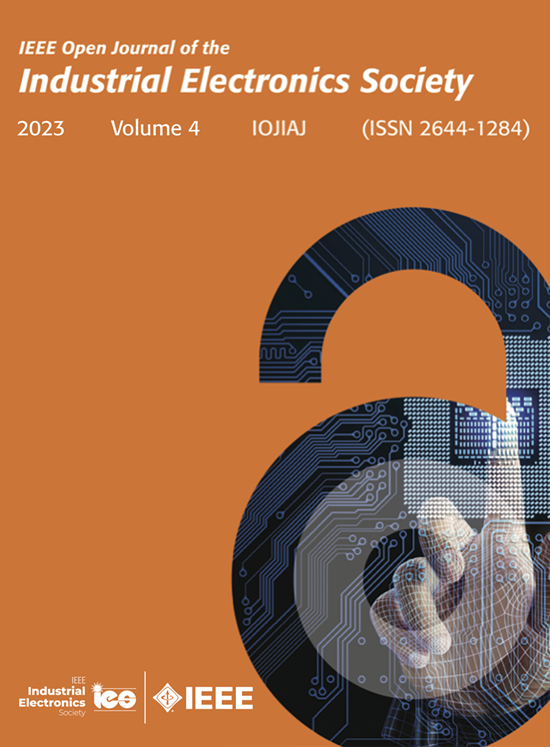Selective Power Control in Grid-Connected AC Microgrids
IF 4.3
Q1 ENGINEERING, ELECTRICAL & ELECTRONIC
IEEE Open Journal of the Industrial Electronics Society
Pub Date : 2025-03-29
DOI:10.1109/OJIES.2025.3575020
引用次数: 0
Abstract
The increasing penetration of nonlinear loads (NLLs) and distributed energy resources (DERs) in low-voltage grids poses challenges to power quality and grid hosting capacity (GHC). This article proposes a centralized multimode selective power control strategy for grid-connected ac microgrids (MGs) that does not require prior knowledge of MG parameters. The strategy enhances GHC and power quality across multiple MG nodes through coordinated control in two nonsimultaneous modes. In the centralized mode, a generalized power-based control algorithm enables selective harmonic/distortion power dispatch. This formulation improves disturbance rejection and accuracy in point of common coupling (PCC) power tracking. For the first time, feedback, feedforward, and disturbance decoupling actions are applied to distortion/harmonic power in MGs. In the decentralized mode, harmonic current compensation (HCC) is achieved without communication links, reducing data traffic via a selective voltage-detection-based approach. The proposed strategy enables (i) resistive load synthesis at the PCC to damp upstream grid resonances, (ii) sinusoidal current synthesis (SCS) for current quality enhancement and compliance with standards, and (iii) HCC based on voltage measurements to improve voltage quality at internal nodes. Comprehensive simulations evaluate reference tracking, disturbance rejection, grid short-circuit level effects, and mode transitions. Results show that in decentralized mode, PCC voltage THD improved from 10.65% to 1.09% under weak grids. In centralized mode, with SCS up to the 11th harmonic, PCC current THD was reduced from 61.18% to 3.42% under stiff grids. Experimental results confirm the feasibility of implementation in real MGs.并网交流微电网的选择性功率控制
随着低压电网中非线性负荷和分布式能源的不断增加,对电能质量和电网承载能力提出了挑战。本文提出了一种不需要预先知道并网交流微电网(MG)参数的集中多模选择功率控制策略。该策略通过两种非同步模式下的协调控制,提高了多个MG节点的GHC和电能质量。在集中式模式下,采用基于功率的广义控制算法,实现谐波/畸变功率的选择性调度。该公式提高了共耦合点(PCC)功率跟踪的抗干扰性和准确性。首次将反馈、前馈和干扰解耦作用应用于mgg中的失真/谐波功率。在分散模式下,谐波电流补偿(HCC)在没有通信链路的情况下实现,通过基于选择性电压检测的方法减少数据流量。所提出的策略实现了(i) PCC的电阻负载合成以抑制上游电网谐振,(ii)正弦电流合成(SCS)以增强电流质量并符合标准,以及(iii)基于电压测量的HCC以改善内部节点的电压质量。综合仿真评估参考跟踪、干扰抑制、电网短路电平效应和模式转换。结果表明,在分散模式下,弱电网下PCC电压THD由10.65%提高到1.09%。在集中模式下,当SCS达到11次谐波时,刚性电网下PCC电流THD从61.18%降低到3.42%。实验结果证实了该方法在实际MGs中实现的可行性。
本文章由计算机程序翻译,如有差异,请以英文原文为准。
求助全文
约1分钟内获得全文
求助全文
来源期刊

IEEE Open Journal of the Industrial Electronics Society
ENGINEERING, ELECTRICAL & ELECTRONIC-
CiteScore
10.80
自引率
2.40%
发文量
33
审稿时长
12 weeks
期刊介绍:
The IEEE Open Journal of the Industrial Electronics Society is dedicated to advancing information-intensive, knowledge-based automation, and digitalization, aiming to enhance various industrial and infrastructural ecosystems including energy, mobility, health, and home/building infrastructure. Encompassing a range of techniques leveraging data and information acquisition, analysis, manipulation, and distribution, the journal strives to achieve greater flexibility, efficiency, effectiveness, reliability, and security within digitalized and networked environments.
Our scope provides a platform for discourse and dissemination of the latest developments in numerous research and innovation areas. These include electrical components and systems, smart grids, industrial cyber-physical systems, motion control, robotics and mechatronics, sensors and actuators, factory and building communication and automation, industrial digitalization, flexible and reconfigurable manufacturing, assistant systems, industrial applications of artificial intelligence and data science, as well as the implementation of machine learning, artificial neural networks, and fuzzy logic. Additionally, we explore human factors in digitalized and networked ecosystems. Join us in exploring and shaping the future of industrial electronics and digitalization.
 求助内容:
求助内容: 应助结果提醒方式:
应助结果提醒方式:


